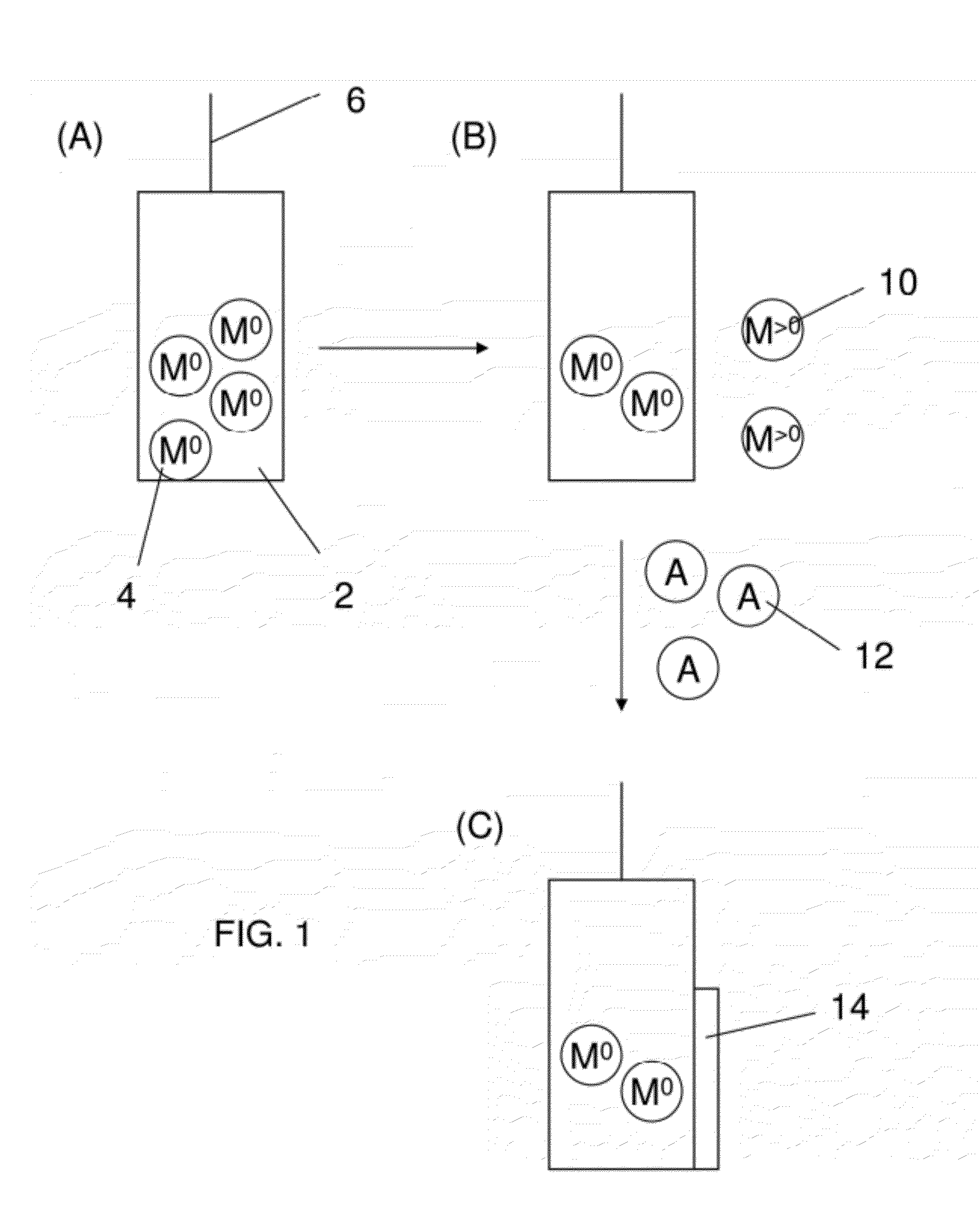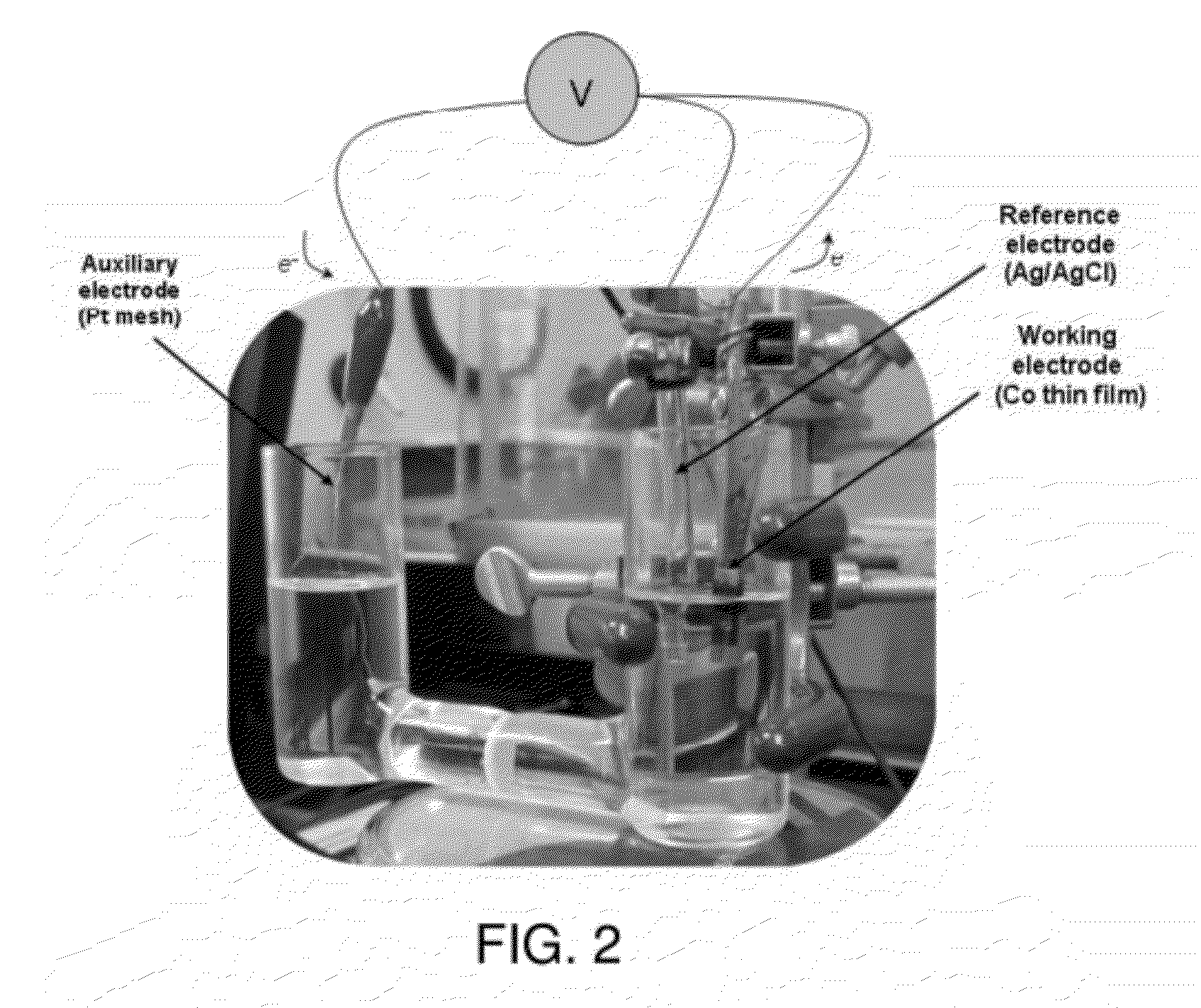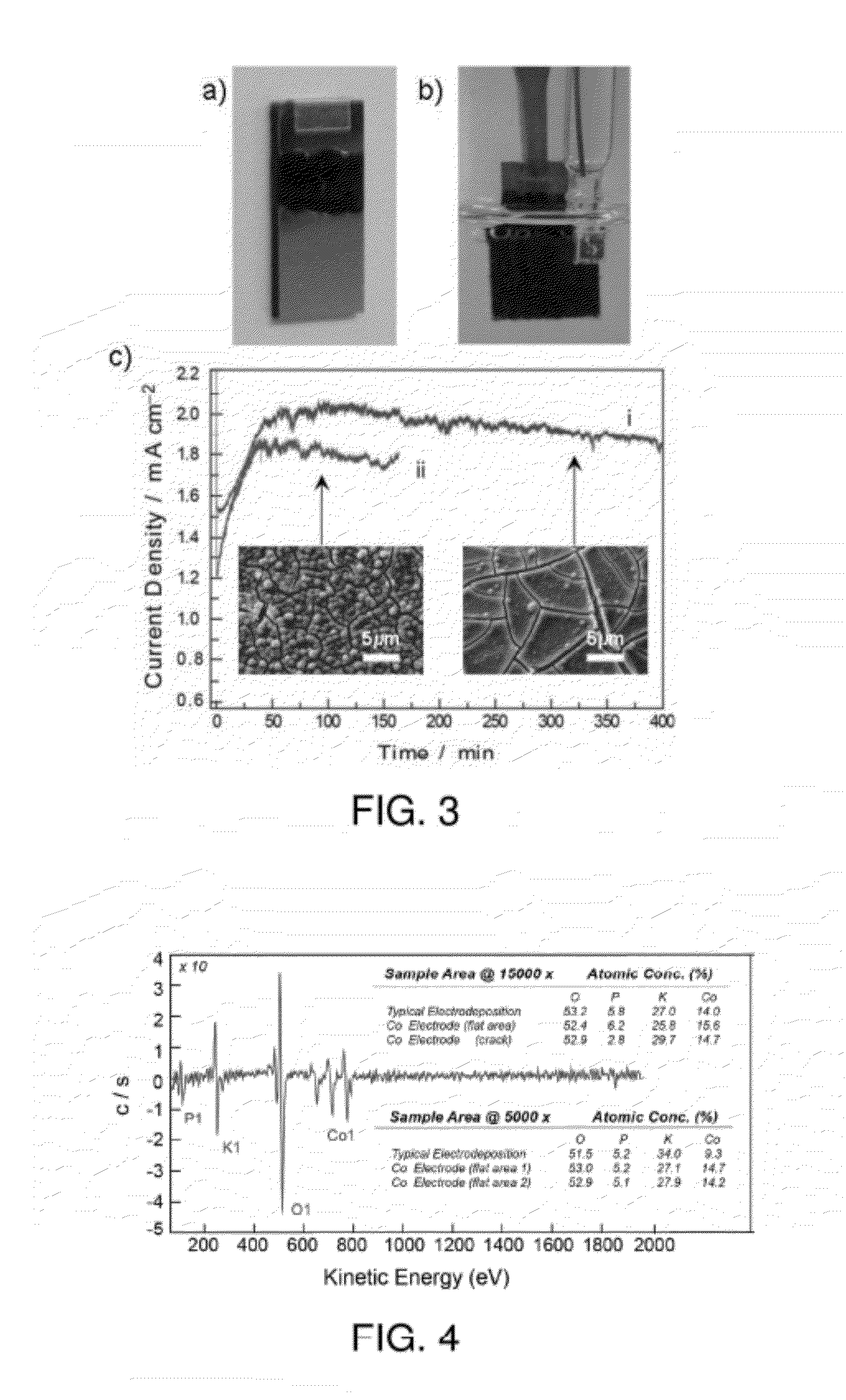Methods for forming electrodes for water electrolysis and other electrochemical techniques
- Summary
- Abstract
- Description
- Claims
- Application Information
AI Technical Summary
Benefits of technology
Problems solved by technology
Method used
Image
Examples
example 1
[0110]The following examples describes the direct formation of a cobalt-based water oxidation catalyst from thin-film cobalt anodes.
[0111]Introduction: Efficient electrolysis of water to hydrogen and oxygen driven by sunlight is a longstanding goal envisioned for clean energy storage. The four proton, four electron proton-coupled electron transfer (PCET) reaction required to achieve water splitting generates high energy barriers to this molecular transformation. Molecular catalysts and other catalytic materials are sought to ease the energy input requirement for water oxidation. Although commercial electrolysis systems exist, these systems typically operate under harsh chemical conditions and often are constructed using costly catalytic materials. Thus, the need for an inexpensive catalytic material that operates under chemically neutral conditions (pH ˜7) persists for electrolyzers designed to penetrate the general, non-commercial market.
[0112]Recently, a catalyst formed from Co2+ ...
example 2
[0131]The following examples describes the direct formation of a cobalt-based water oxidation catalyst from thin-film cobalt anodes, where the cobalt thin-film is formed on a silicon substrate.
[0132]A thin film of cobalt metal (about 4 nm) was RF sputter deposited onto a room temperature Si substrate. A piece of copper foil tape with conductive epoxy was applied to the top of the cobalt metal electrode. A copper alligator clip was affixed at the position of the copper tape to connect the electrode to the electrochemical setup. Co-Pi formation was performed under an anodic potential of 1.1 V versus Ag / AgCl in 0.1 M KPi. Application of an anodic current to the cobalt metal generated Co2+ ions that undergo a PCET reaction with the KPi solution to form thin films of the Co-Pi catalyst.
[0133]SEM analysis (see FIG. 8A) indicates that Co-Pi is formed form the Co metal on the Si electrode. EDAX analysis (see FIG. 8B) shows the presence of K and P peaks indicating that Potassium and Phosphor...
example 3
[0134]Nickel metal may also be employed (e.g., as compared to cobalt metal). In this example, an 800 nm layer of nickel metal and a solution comprising borate (e.g., 0.1 M borate, pH 9.2) was used. The deposition was carried out at 0.8 V versus Ag / AgCl. The electrode was annealed at 100° C. in vacuum. Representative SEM images and a plot of the current density versus time is shown in FIG. 9.
PUM
| Property | Measurement | Unit |
|---|---|---|
| Length | aaaaa | aaaaa |
| Length | aaaaa | aaaaa |
| Length | aaaaa | aaaaa |
Abstract
Description
Claims
Application Information
 Login to View More
Login to View More - R&D
- Intellectual Property
- Life Sciences
- Materials
- Tech Scout
- Unparalleled Data Quality
- Higher Quality Content
- 60% Fewer Hallucinations
Browse by: Latest US Patents, China's latest patents, Technical Efficacy Thesaurus, Application Domain, Technology Topic, Popular Technical Reports.
© 2025 PatSnap. All rights reserved.Legal|Privacy policy|Modern Slavery Act Transparency Statement|Sitemap|About US| Contact US: help@patsnap.com



